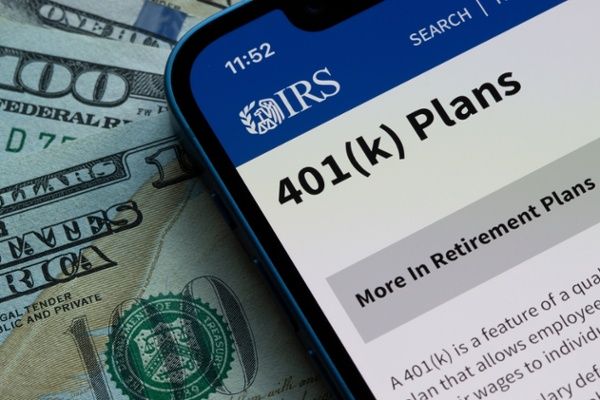Every 401(k) contribution—whether made by employees or the employer—must be deposited by a specific deadline. Unfortunately, many small business owners are unclear about these timelines. That confusion can lead to costly consequences, from lost tax deductions to IRS penalties or even plan disqualification.
The good news? With a basic understanding of these rules, you can avoid these pitfalls entirely. This guide explains the deposit deadlines for all types of 401(k) contributions and what to do if you miss one.
Employee Contributions: Deadlines and Corrections
Employee contributions include pre-tax and Roth deferrals, voluntary after-tax contributions, and participant loan repayments. These amounts are withheld directly from employee paychecks and must be deposited into the plan trust in a timely manner.
Deadline for Depositing Employee Contributions
Under Department of Labor (DOL) rules, these contributions must be deposited as soon as they can reasonably be segregated from the employer's general assets, but no later than the 15th business day of the month following the month in which they were withheld. This rule ensures that employee funds are protected and invested as quickly as possible.
Small employers (100 or less employees) are subject to a safe harbor rule. They can automatically satisfy the DOL deadline requirement by depositing employee contributions within 7 business days of withholding. This safe harbor provides a bright-line rule for smaller employers who may not have sophisticated payroll systems.
Correcting Late Employee Contributions
When employee contributions are not deposited by the deadline, they are considered late under Department of Labor (DOL) rules. To fix this issue, employers must take corrective action to make participants whole and report the failure appropriately. They can have up to three options to choose from:
-
- Full Voluntary Fiduciary Correction Program (VFCP): The VFCP is a DOL initiative that allows employers to correct specific violations of ERISA (including late deposits) without facing enforcement actions. When properly used, it provides a structured correction process and results in a “no action” letter from the DOL that effectively eliminates the risk of future DOL or IRS penalties for the corrected violation.
- Self-Correction Component (SCC) of VFCP (2025 Update): In 2025, the DOL introduced the SCC to streamline the correction process for certain late deposits. Instead of a VFCP application, eligible self-correctors submit a SCC Notice through VFCP’s web tool and provide specified information. After filing the SCC Notice, self-correctors receive an email acknowledgment instead of a “no action” letter.
-
- Informal Self-Correction: Employers can self-correct late deposits informally (not using the VFCP), but doing so properly can increase the likelihood of a plan audit by the DOL or IRS.
- Lost Earnings: The DOL online calculator cannot be used. Lost earnings must generally be calculated based on the greater of:
- Actual rate of return, or
- The IRS §6621 underpayment rate
- Excise Tax and Reporting: Employers report the must report the late deposits on their Form 5500 pay a 15% excise tax on the lost earnings amount to the IRS using Form 5330.
- Lost Earnings: The DOL online calculator cannot be used. Lost earnings must generally be calculated based on the greater of:
- Informal Self-Correction: Employers can self-correct late deposits informally (not using the VFCP), but doing so properly can increase the likelihood of a plan audit by the DOL or IRS.
If a late deposit issue is not corrected properly, the DOL may take enforcement action, including lawsuits to recover participant losses on behalf of the plan.
Employer Contributions: Deadlines and Corrections
Employer contributions include matching and nonelective (e.g., profit sharing) contributions. These contributions are subject to two annual deadlines – one for tax deduction purposes and another for “annual additions” purposes. These deadlines depend upon your company’s tax status and the type of contribution to be made.
Deductibility Deadline for Employer Contributions
To deduct employer contributions on your tax return, they must be deposited by the due date of your business’s federal tax return, including extensions. Contributions made after this deadline cannot be deducted for the prior tax year.
Deductibility Deadline by Entity Type
|
Tax Status |
Deadline |
Extended Deadline |
|
C-Corporation (or LLC taxed as C-Corp) |
15-Apr |
15-Oct |
|
S-Corporation (or LLC taxed as S-Corp) |
15-Mar |
15-Sep |
|
Partnership (or LLC taxed as a part) |
15-Mar |
15-Sep |
|
Sole Proprietorship (or LLC taxed as sole prop) |
15-Apr |
15-Oct |
Example: ABC S-Corp operates on a calendar year. To deduct 2024 contributions, they must deposit by March 15, 2025, or September 15, 2025 if an extension is filed. Contributions deposited after those dates may still be annual additions for 2024, but they won't be deductible until 2025.
Annual Additions Deadline for Employer Contributions
“Annual additions” are the total contributions allocated to a participant’s account in a given limitation year, including:
-
- Pre-tax and Roth wage deferrals
- Voluntary after-tax contributions
- Matching contributions
- Nonelective contributions
- Forfeitures
Employers must cap annual additions at the 415(c) limit annually, For 2025, the 415(c) limit is $70,000, plus a $7,500 catch-up contribution for participants age 50 or older.
Deadline by Contribution Type
The annual additions deadline for employer contributions depends upon the type of employer contribution being made:
-
- Safe Harbor Contributions: Must be deposited by the last day of the plan year following the plan year in which the contributions are earned. If a safe harbor match is made on a per-payroll basis without a year-end “true-up”, it must be deposited by the end of the quarter following the quarter in which the match was earned.
- Corrective Contributions: Employer contributions used to correct a failed nondiscrimination test - top heavy minimums, QNECs and QMACs - must be deposited by the last day of the plan year following the plan year in which the contributions are earned.
-
- Discretionary Contributions: 30 days following the deductibility deadline.
Correcting Late Employer Contributions
When employer contributions are not made by their respective deadlines, it can result in a plan qualification failure under IRS rules. This type of failure means the plan is no longer meeting IRS requirements, which could jeopardize its tax-favored status.
To remedy the situation, the IRS allows plan sponsors to use the Employee Plans Compliance Resolution System (EPCRS). This system provides structured methods for correcting different types of failures while preserving the plan's tax benefits.
Here's how the correction process works:
- Determine the Severity of the Failure:
- An insignificant failure can usually be corrected through the Self-Correction Program (SCP) without IRS approval or penalties.
- A significant failure must be addressed through the Voluntary Compliance Program (VCP). This requires submitting a correction proposal to the IRS and paying a user fee.
- Make the Required Contributions:
- The employer must fund any missed contributions owed to plan participants.
- If the delay caused participants to lose potential investment earnings, the employer must also fund lost earnings to restore participants to the financial position they would have been in had the contributions been made on time.
- Document the Correction:
- Keep clear and complete records of the failure and how it was fixed.
- For VCP corrections, submit all documentation as required by the IRS. This may include a detailed explanation of the failure, calculations, and evidence of correction.
Staying Out of Trouble is Easy with Right Help!
In general, the deadline rules for 401(k) contribution are straightforward—until a contribution is missed. The best way to avoid penalties and paperwork is to stay proactive:
-
- Set up a contribution funding schedule aligned with your payroll cycle
- Automate deposits where possible to reduce the risk of delays
- Monitor your provider's processing timeline
- Ask questions early—deadlines are easier to meet than to fix
If you’re ever unsure, contact your 401(k) provider. A knowledgeable partner can help you stay in compliance and avoid costly errors.





